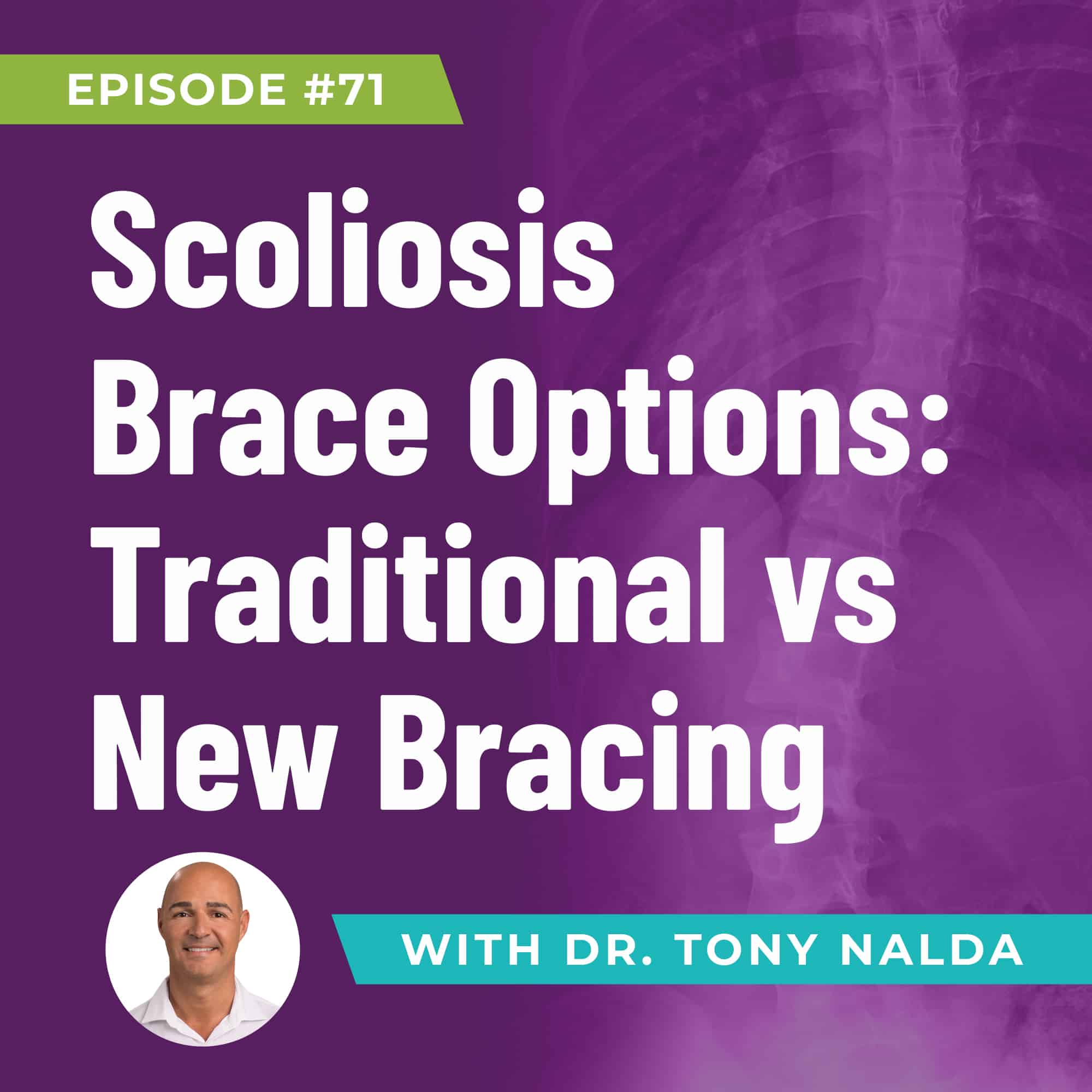Episode 71: Scoliosis Brace Options: Traditional vs New Bracing
One of the most common questions that get asked when consulting with a patient regarding their scoliosis treatment is scoliosis bracing. Scoliosis bracing actually has a long history in the treatment of scoliosis but the debate still continuous between the time-tested traditional approaches against the groundbreaking new-age methods.
Traditional Bracing: A Closer Look
Traditional bracing is primarily focused on a specific group of patients - typically adolescents with moderate scoliosis curves ranging from 20 to 40 degrees. These patients are still growing and are at a high risk of curve progression.
The primary goal of traditional bracing is to halt or slow down the progression of scoliosis curves in these specific cases. The brace is designed to provide external support and compression to the spine, aiming to prevent further curvature during the rapid growth phase.
Upon careful assessment and numerous studies and tests, it is observed that traditional braces didn't yield the desired outcomes. Strengthening the spine should be the priority, rather than relying solely on external compression. But really, the effectiveness of a brace is heavily dependent on its design. Regardless of the type of brace used, a well-designed brace can deliver positive results, while a poorly designed one may lead to unsatisfactory outcomes.
Corrective Bracing: New Bracing Possibilities
Currently, there are innovative approaches in scoliosis bracing that depart from traditional methods. These new bracing techniques leverage modern advancements to address scoliosis with enhanced precision and effectiveness. Among these innovations, 3D-printed braces stand out, offering a personalized and tailored fit for each patient's unique spinal curvature. These braces are designed to not only halt progression but also actively correct the spinal deformity. Additionally, adjustable braces provide flexibility in treatment, adapting to the changing needs of the spine as it responds to therapeutic interventions. These new-age braces together with comprehensive treatment regimens, contributes to improved posture, reduced pain, and enhanced overall spinal function. These advancements signify a paradigm shift in scoliosis bracing, empowering patients with a broader range of options to proactively manage their spinal health.
Confused as to go with the tried-and-true or venture into unchartered bracing territory, let Dr. Tony Nalda be your guide so you can make informed treatment decisions and to have hope in this confusing times.
Subscribe to the podcast and listen to the full episode to explore the dynamic world of scoliosis braces and how they can redefine your scoliosis journey.
Musicbed SyncID: MB016D6WPQ3WHGL
Podcast: Play in new window | Download
Subscribe: RSS
Dr. Tony Nalda
DOCTOR OF CHIROPRACTIC
After receiving an undergraduate degree in psychology and his Doctorate of Chiropractic from Life University, Dr. Nalda settled in Celebration, Florida and proceeded to build one of Central Florida’s most successful chiropractic clinics.
His experience with patients suffering from scoliosis, and the confusion and frustration they faced, led him to seek a specialty in scoliosis care. In 2006 he completed his Intensive Care Certification from CLEAR Institute, a leading scoliosis educational and certification center.
About Dr. Tony Nalda
 Ready to explore scoliosis treatment? Contact Us Now
Ready to explore scoliosis treatment? Contact Us Now








